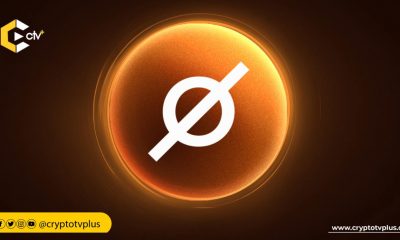News
Vitalik Buterin: L2s with Celestia are validiums, not true rollups

In a recent post on X, Ethereum’s co-founder Vitalik Buterin proposed calling Layer 2 (L2) solutions using Celestia as their data availability layer “validiums” rather than rollups, sparking a discussion among crypto enthusiasts and developers about the proper classification of L2s that use Celestia as their DAL.
Some argue that validiums should be considered a distinct category, while others argue that they are a subset of rollups.
Vitalik Buterin stirred up debate about the distinction between different types of layer-2 (L2) scaling solutions, arguing that blockchains using a data availability layer (DAL) like Celestia should not be considered true rollups but rather a new category of L2s called “validiums.”
In response to a X post from Daniel Wang on Jan.16, Buterin agreed that a rollup using another DAL like Celestia is not a true rollup but a different type of L2 called a validium, implying that only rollups fully relying on Ethereum for data availability can be considered true rollups.
Buterin’s reply affirmed that for an L2 to be considered a true rollup, it must provide users with an unconditional security guarantee, ensuring they can withdraw their assets even if other users collude to prevent it. He emphasized that rollups relying solely on Ethereum for data availability achieve high-security levels. Besides, he pointed out that true rollups must rely solely on Ethereum for data availability; otherwise, there is no guarantee of security and availability. Consequently, L2s relying on an external DAL, like Celestia, should be classified as validiums instead of rollups.
Validium is an Ethereum scaling solution utilizing zero-knowledge proofs for off-chain transactions while relying on Ethereum’s mainnet for security and verification. Unlike zero-knowledge rollups, such as ZK-Rollups, which batch transactions on a layer-2 network and post proofs on Ethereum’s mainnet for security, validiums do not post any data to Ethereum’s mainnet. They only post proof of transaction validity, offering greater scalability as the mainnet doesn’t need to verify all transactions, only the proof of validity. Technical or financial difficulties for the operator may lead to reduced data availability for validium users.
Networks like Celestia divide the blockchain into a data availability layer and a validation layer. The data availability layer stores transaction data, while the validation layer uses validiums to validate data without requiring the full transaction data.
In a recent post on Warpcast, Vitalik Buterin suggested adjusting the terminology for different types of L2s, proposing terms like “strong” and “light” instead of “security-favoring” and “scale-favoring” for clarity.
In response to Buterin’s proposed terminology, a prominent Ethereum community member, Ryan Berckmans, disagreed, arguing that validiums should still be considered L2 networks. He believes that a chain settling on Ethereum should be considered a layer-2 network, even if it doesn’t store transaction data on the Ethereum mainnet.
Berckmans contends that the definition of a layer-2 network is not set in stone due to the blockchain industry’s early stages. He suggests that the most useful definition includes both rollups and validiums, as they both inherit security from the Ethereum mainnet.
However, L2Beat, a platform offering analytics on layer-2 solutions, disagrees with Berckmans’ definition of a layer-2 network.
L2Beat argued that validiums and similar solutions, like optimiums, are not layer-2 networks because they introduce additional trust assumptions on top of the layer-1 blockchain.
Read also: Solana-based Jupiter confirms token release date

























1 Comment